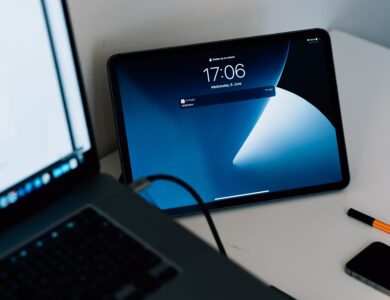What are floating solar power stations and the most famous ones in the world?

Floating solar plants are solar power plants that exploit unused water bodies such as lakes, dams, rivers and seas to produce solar energy without the need to use land.
Floating solar power plants are useful in places where there are no large areas of land, as producing one megawatt requires at least 5 acres of land.
Asia is known to have the highest percentage of floating solar power plants, and its importance is evident in countries consisting of many islands such as Japan, Korea and Indonesia.
Since floating solar power plants are built on water bodies, water provides the advantage of providing cooling, thus mitigating the impact of temperatures on solar panels, which will benefit their efficiency.
In this article, we will learn together about floating solar power stations, their advantages, and the challenges facing their spread. We will also learn about the most famous ones around the world.
Main components of floating solar power plants
Floating solar power plants consist of 5 main components plus some secondary components.
Here are the main ingredients:
1. Solar Photovoltaic (PV) Panels: It is a group of photovoltaic solar cells that convert solar energy into direct current (DC).
It is the main component of floating solar power plants.
2. Floating Platforms: They are sturdy structures on which photovoltaic solar panels are mounted to make them float on the surface of the water, and are made of buoyant materials such as high-density polyethylene (HDPE).
3. Anchoring System: It consists of a set of ropes and anchors to fix floating platforms to the bottom of the water body, and prevent them from slipping or overturning as a result of water currents and winds.
4. Inverters: Inverters are used in floating solar power plants to convert DC electrical current from the photovoltaic solar panels into AC electrical current that is compatible with the electricity grid.
5. Electrical Infrastructure: It consists of a set of cables, and is used to transmit electricity from transformers to the electricity distribution network.
The secondary components are as follows:
1. Control and monitoring systems: Systems used to monitor system performance and operation automatically.
2. Protection systems: Systems used to protect against lightning, flooding and other hazards.
3. Tracking systems: They are used to orient solar panels towards the sun to improve their efficiency.
4. Cleaning systems: Used to remove dust and dirt from solar panels.
5. Cooling systems: It is used to cool solar panels in hot climates, improving their efficiency.
Read also: The largest solar energy projects in the Arab world
How do floating solar power plants work?
Solar panels absorb sunlight and convert it into direct electricity, and floating platforms keep the solar panels positioned and stable so they receive sunlight throughout the day.
Inverters receive the DC electrical current generated by the photovoltaic solar panels and convert it into AC electrical current to be compatible with the electricity grid.
This alternating current is transmitted through cables to distribution points, and then reaches the electricity grid connected to homes, factories and businesses.
Advantages of floating solar power plants
Floating solar power stations have many advantages that make them one of the promising solutions in the field of clean energy. Examples of these advantages include the following:
Space utilization: This is the most important feature of floating solar power stations, as they are built on unused water bodies, and thus are useful in cases where available land is scarce or expensive.
Increase efficiency: Floating solar power plants are highly efficient due to the cooling effect of water, which reduces the decomposition of solar panels due to heat, and will increase their efficiency and thus increase the amount of electricity produced.
Water conservation: Solar panels keep the water they cover from evaporating, making them suitable for areas that suffer from drought or water scarcity.
Integration with hydropower: Floating solar power plants can be built on water reservoirs in hydroelectric power plants.
Thus increasing the production of electrical energy, and during peak periods of energy production from solar panels, water discharge can be reduced in order to improve efficiency.
Environmental benefits: When floating solar panels cover water bodies, they reduce the amount of sunlight falling on the water bodies, which leads to reduced growth of algae and aquatic plants, which has a significant impact on water quality and the preservation of aquatic ecosystems.
Floating solar power plants also do not require land space, which reduces disruption to natural habitats and different ecosystems.
Flood protection: When floods occur and water levels rise, floating solar panels will rise with the water and will be less likely to sink. This is different from solar panels installed on the ground, which are more likely to sink and thus be damaged.
Scalability: Floating solar power plants are characterized by their ability to expand if increased electricity production is required, meaning that the size of the station can be easily controlled according to need, because it is made up of modules.
Economic advantages: Floating solar power plants do not require dedicated land, which saves the cost of purchasing land.
Entertainment features: Floating solar power stations can be used for entertainment purposes, as they overlook water bodies, and many recreational activities can be carried out, such as fishing, bird watching, and boating.
The most important challenges facing floating solar power plants
Floating solar power plants are promising solutions for producing clean energy, but they are still in their infancy and face some challenges.
The most prominent of these challenges are the following:
High initial cost: The cost of infrastructure and floating structures is high.
Difficulty connecting to the network: Connecting floating solar power plants is more complicated because of the need for special equipment and special cables to pass underwater.
Difficulty in maintenance and cleaning: Solar Panel Maintenance Solar panels in water require trained equipment and workers, so the cost of maintenance and cleaning is high.
Conducting environmental assessments: Before floating solar power plants are built, an assessment of the expected environmental impacts must be conducted, including an assessment of water quality and the effects on natural habitats and various ecosystems.
Special specifications when designing: Floating infrastructure must be made of materials that can withstand various environmental factors such as waves, water currents and wind.
Special specifications for choosing the location of the floating solar station: Not all bodies of water are suitable for setting up a solar power plant, but some conditions must apply to them, such as the depth and quality of the water.
Weather affected: Electricity production from floating solar power plants is affected by weather conditions such as cloud cover or seasonal weather changes, and floating plants can be severely damaged or destroyed by storms and hurricanes.
The most famous floating solar power plants around the world
Floating solar power plant projects have gained a lot of momentum recently, and there are projects that have been successful in being one of the powerful solutions in providing clean energy.
Here are the most famous floating solar power projects around the world:
Dezhou Dingzhuang Station: The station is located on the Dezhou Reservoir in Shandong Province, China, and is connected to a 320 MW wind power plant.
Three Gorges New Energy Floating Station: Located in Huainan City, Anhui Province, China, the station has a capacity of 150 megawatts and supplies electricity to about 94,000 homes.
Yamakura Station: Located on the Yamakura Dam in Chiba Prefecture, Japan, it is one of the largest floating solar power plants in the world, with a capacity of 13.7 megawatts.
Sembcorp Tengah Station: Located on the Tengeh Reservoir in Singapore, it is the largest floating solar power plant in Singapore, with a capacity of 60 megawatts.
Hydrelio Station: Located in France, the station was developed by Ciel & Terre, a leader in the development of innovative floating platforms, and is the first floating solar power station in France, inaugurated in 2019.
Banja Station: The station is located on an artificial lake in Kosovo and is the first floating solar power station in Kosovo, with a capacity of about 0.75 megawatts.
Sirindhorn Station: Located on the Sirindhorn Dam in Thailand, it is one of the largest floating solar power plants in the world, with a capacity of 45 megawatts.
The world’s largest floating solar power plant
China’s Dezhou Dingzhuang was the world’s largest floating solar power plant.
But now that news has spread that South Korea is building a 1,200-megawatt floating solar power plant known as Saemangeum on the Yellow Sea coast, more than tripling its runner-up in production capacity.
The project will be implemented in phases, with construction scheduled to begin in 2025 and commercial operation expected in 2026. The station is expected to supply electricity to about one million homes.
The company that owns the project and is responsible for its implementation is Hanwha Solutions.
Conclusion
Floating solar power plants are one of the promising solutions for generating electricity. They are still in the early stages, and a bright future awaits them as technology develops and we are able to overcome the challenges.
It is very suitable for areas that do not have large land areas, and it also saves the cost of purchasing land, in addition to the possibility of integrating it with hydroelectric power projects, which leads to increased electricity production and reduced environmental impacts.



